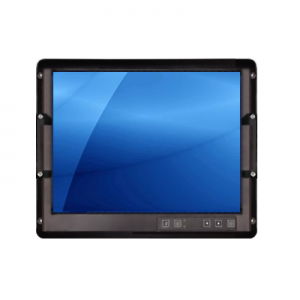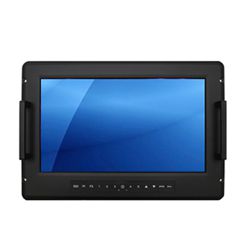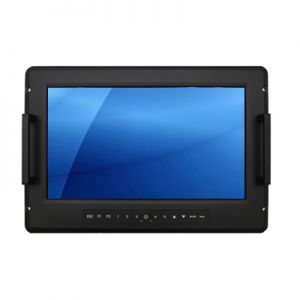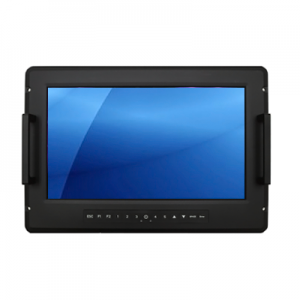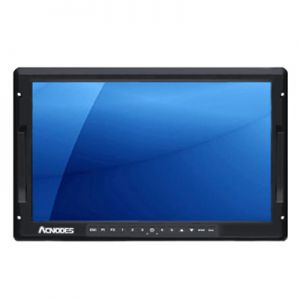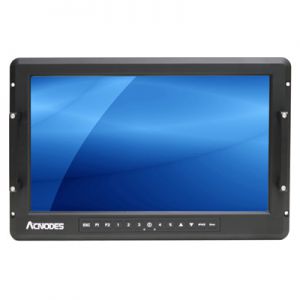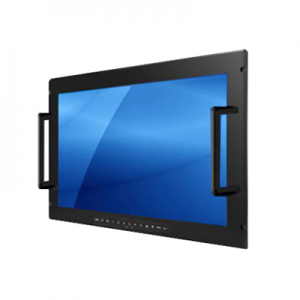Rugged Rack LCD Monitors - MIL-STD-810G/461E
Rugged Rack LCD Monitors - MIL-STD-810G/461E
-
- 9U 20.1" rugged military rackmount LCD monitor
- Supports 1600 x 1200 pixel resolution
- 300-nit brightness, option for 1000-nit high brightness
- VGA + DVI video input, option for DP, HDMI, or BNC input
- ITO glass, option for Resistive or Capacitive type touch screen
- Option for dimming light sensor and optical bond
- MIL-STD-810G environmental & MIL-STD-461E EMC compliant
- Extended working temperature range from -15°C to 55°C
- AC power input with D38999 MIL-type connector
-
- 8U 17.3" rugged military rackmount LCD monitor
- Supports 1920 x 1200 pixel resolution
- 600-nit high brightness brightness
- VGA + DVI video input, option for DP, HDMI, or BNC input
- AR glass, option for ITO glass or Capacitive type touch screen
- Option for dimming light sensor and optical bond
- MIL-STD-810G compliance for vibration, shock, and humidity
- Extended working temperature range from -15°C to 55°C
- DC power input with external AC power adapter
-
- 8U 17.3" rugged military rackmount LCD monitor
- Supports 3840 x 2160 (4K) pixel resolution
- High picture quality with 16.7 million colors
- VGA + DVI + HDMI input, option for DP or BNC input
- AR glass, option for ITO or Resistive / Capacitive touch screen
- Option for dimming light sensor and optical bond
- MIL-STD-810F compliance for vibration and shock
- DC power with external AC power adapter
-
- 8U 17.3" rugged military rackmount LCD monitor
- Supports 1920 x 1080 (Full HD) pixel resolution
- 400-nit brightness, option for 1000-nit high brightness
- VGA + DVI video input, option for DP, HDMI, or BNC input
- AR glass, option for ITO or Resistive / Capacitive touch screen
- Option for dimming light sensor and optical bond
- MIL-STD-810G compliance for vibration, shock, humidity
- Extended working temperature range from -15°C to 55°C
- DC power input with external AC power adapter
-
- 8U 19" rugged military rackmount LCD monitor
- Supports 1440 x 900 pixel resolution
- 250-nit brightness, option for 1000-nit high brightness
- VGA + DVI video input, option for DP, HDMI, or BNC input
- Option for dimming light sensor and optical bond
- IP65 rated anodized aluminum front bezel
- MIL-STD-810G compliance for vibration and shock
- Extending working temperature of -10°C to 55°C
- DC power input with external AC power adapter
-
- 7U 18.5" rugged military rackmount LCD monitor
- Supports 1920 x 1080 (Full HD) pixel resolution
- 1000-nits high brightness sunlight readable display
- VGA + DVI input, option for DP, HDMI, BNC, or Speaker-Audio
- AR glass, option for ITO or Resistive / Capacitive touch screen
- Front IP65-rated bezel for protection against dust and water
- MIL-STD-810G compliance for vibration and shock
- Extended working temperature from -15°C to 55°C
- DC power input with external AC power adapter
-
- 9U 21.5" rugged military rackmount LCD monitor
- Supports 1920 x 1080 (FHD) pixel resolution
- Designed for a standard 22" wide rack cabinet
- VGA + DVI input, option for DP, HDMI, BNC, or Speaker-Audio
- AR glass, option for ITO or Resistive / Capacitive touch screen
- Front IP65-rated bezel for protection against dust and water
- MIL-STD-810G compliance for vibration, shock, humidity
- Extended working temperature from -10°C to 60°C
- DC power input with external AC power adapter
REFERENCES
Military Standard (MIL-STD) Overview
The military standard, which is often referred to as MIL-STD, is a series of guidelines and requirements established by the United States Department of Defense (DoD) for military equipment and systems. The purpose of these standards is to ensure that the equipment meets certain specifications and performance requirements, and that it is compatible with other military equipment and systems. They cover a wide range of areas, including design, performance, testing, and maintenance. Each rating is assigned a number and a letter code, which indicates the specific area of focus. MIL-STD ratings are important for ensuring that military equipment is reliable, durable, and interoperable. They provide a standard framework for testing and evaluating equipment, which helps to ensure that it meets the needs of the military and can be deployed in a variety of environments and situations.
Electromagnetic Interface (EMI) Overview
EMI stands for Electromagnetic Interference. EMI is a common problem that can affect electronic devices, including monitors, by causing interference and disturbances in their normal functioning. EMI can be caused by a variety of sources, and there are two types of EMI: conducted EMI and radiated EMI. To protect electronic devices against the effects of EMI, measures such as shielding, filtering, grounding, proper cable management, compliance with industry standards, and the use of compliant components can be implemented. By taking these measures, electronic devices can operate reliably and consistently in environments where there is a high risk of EMI.





